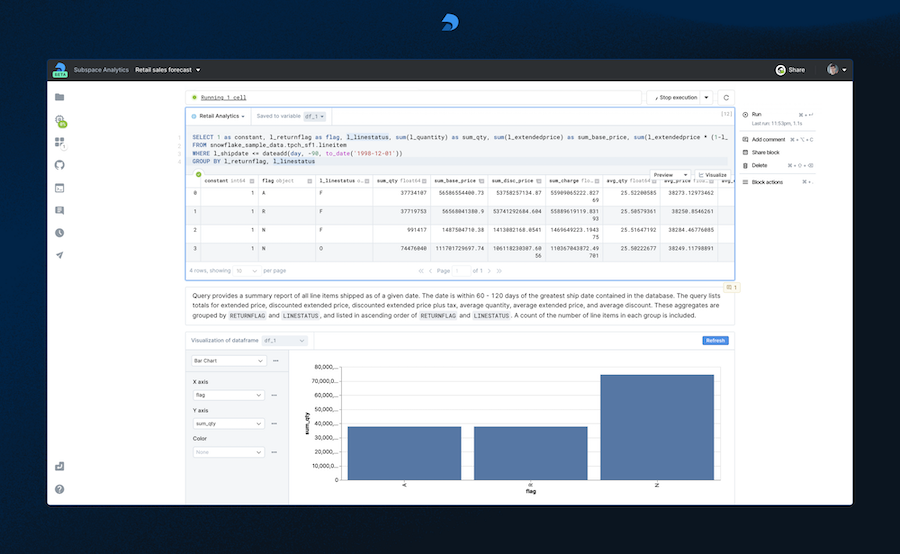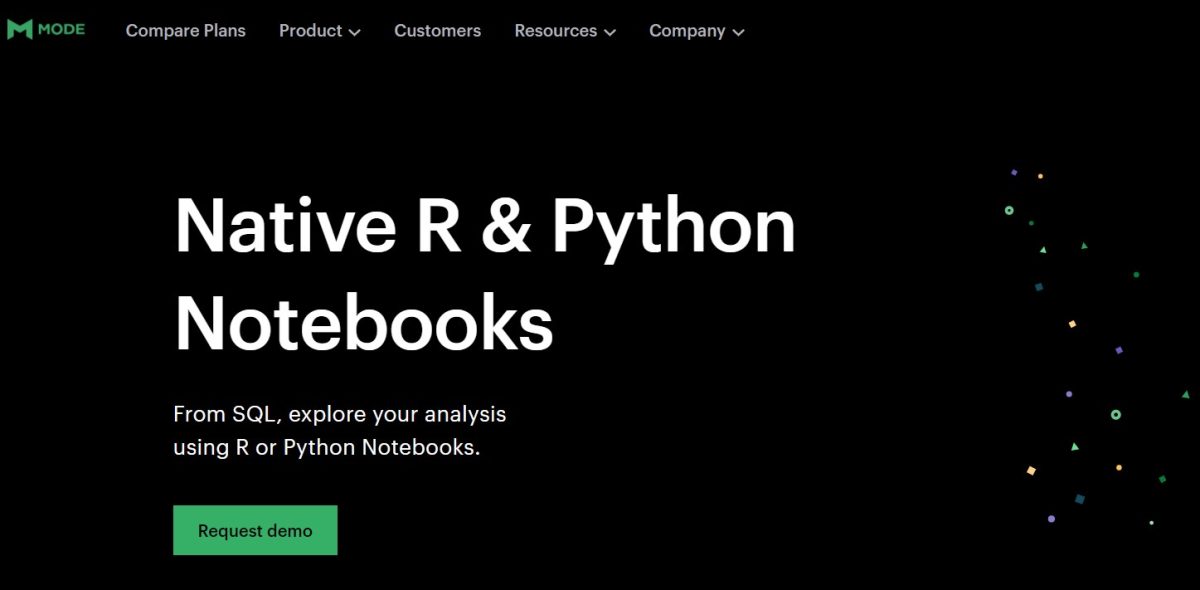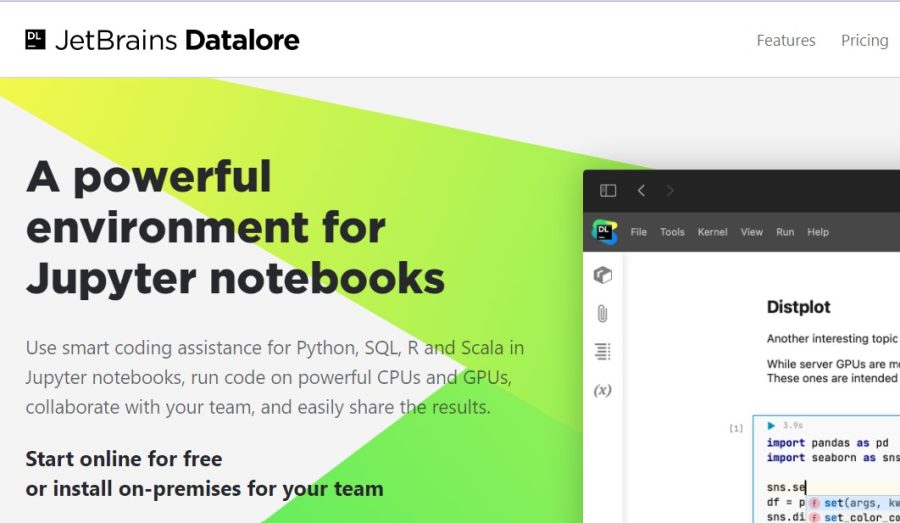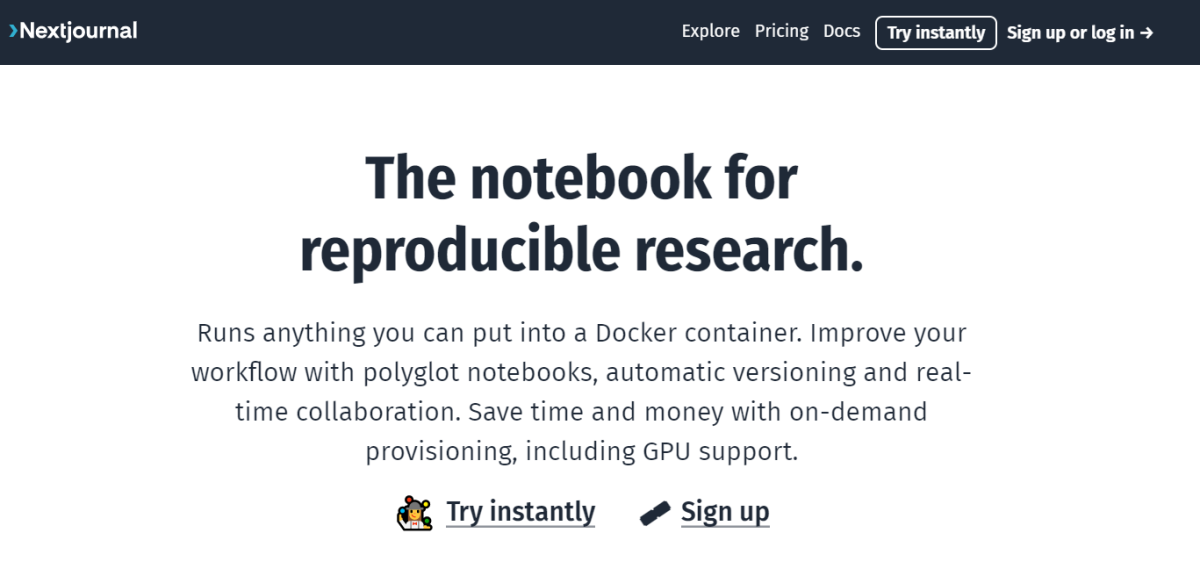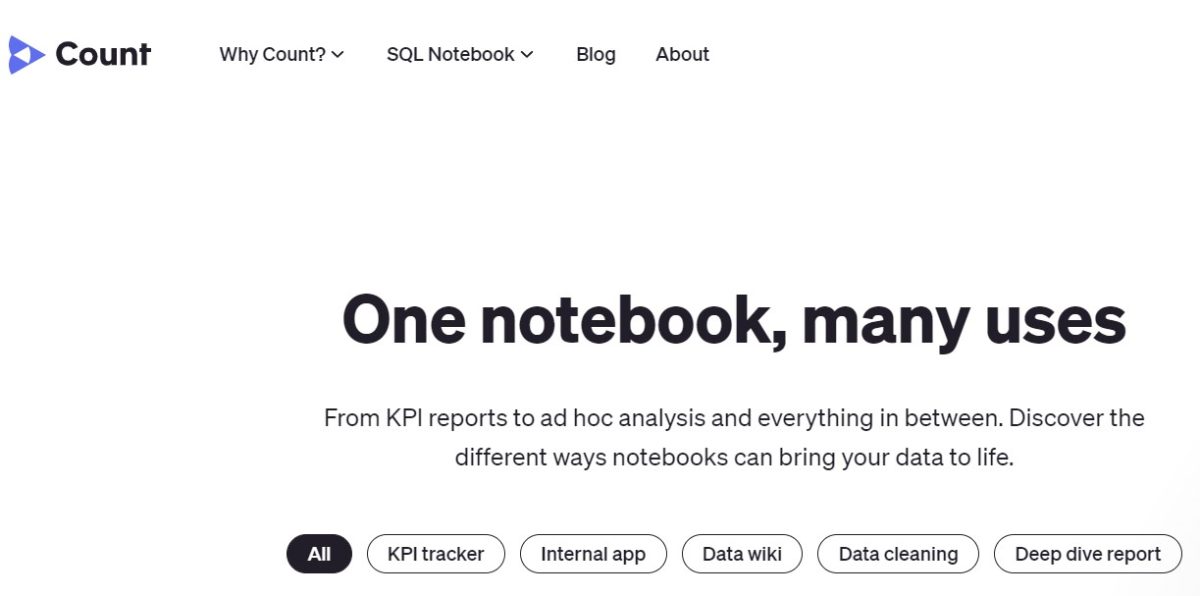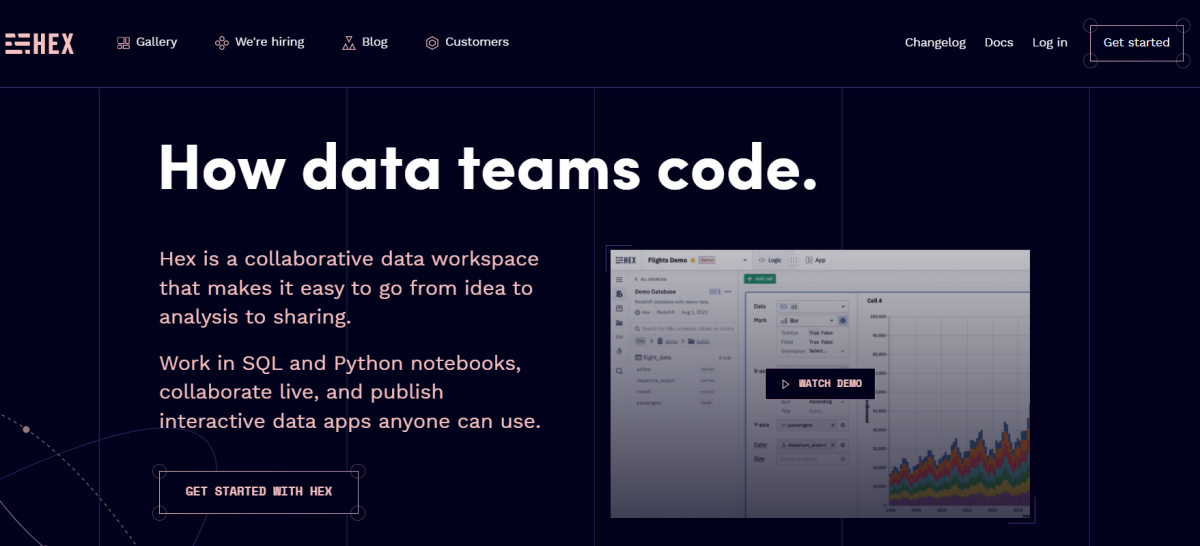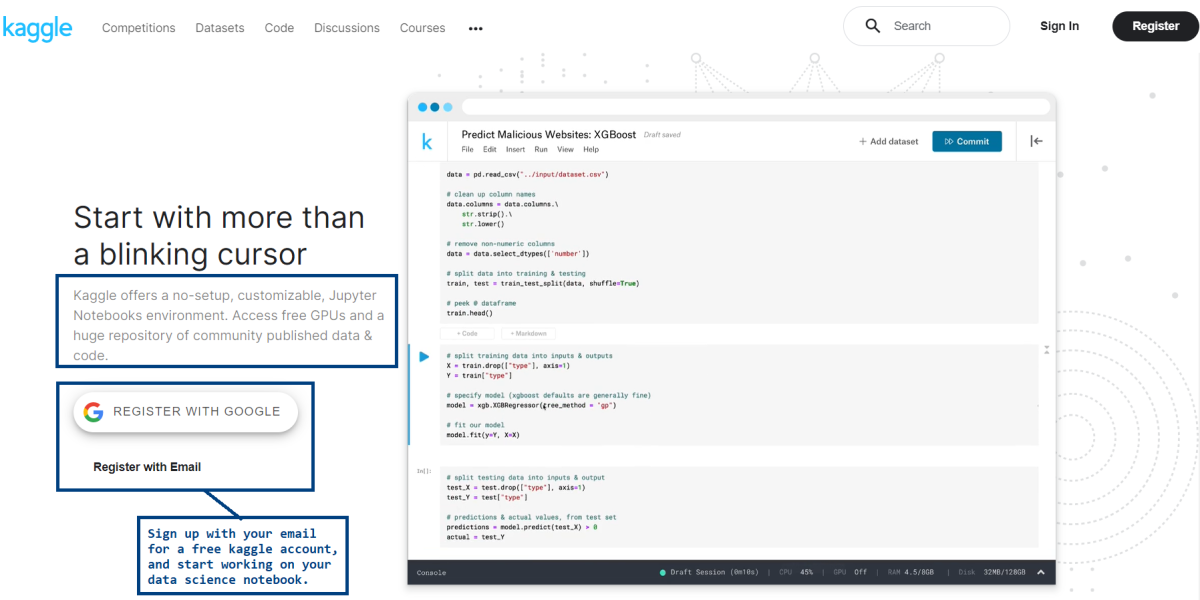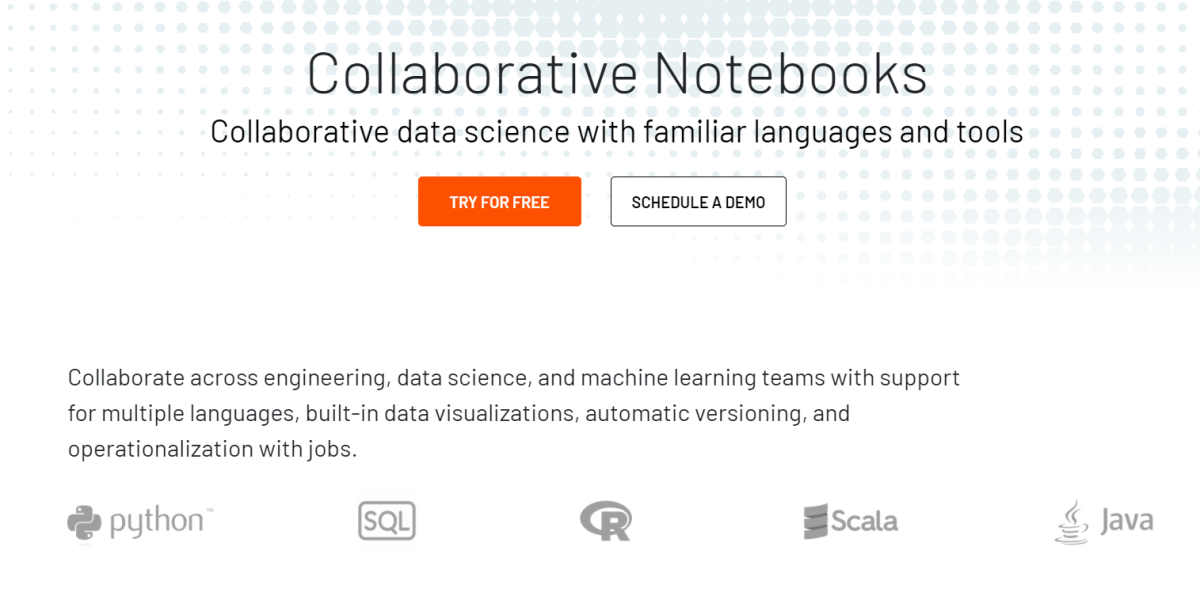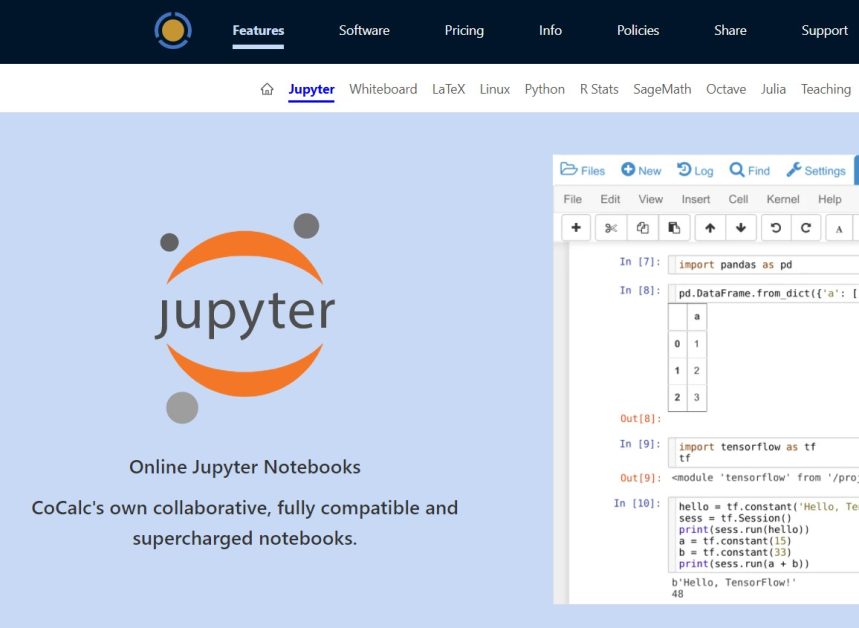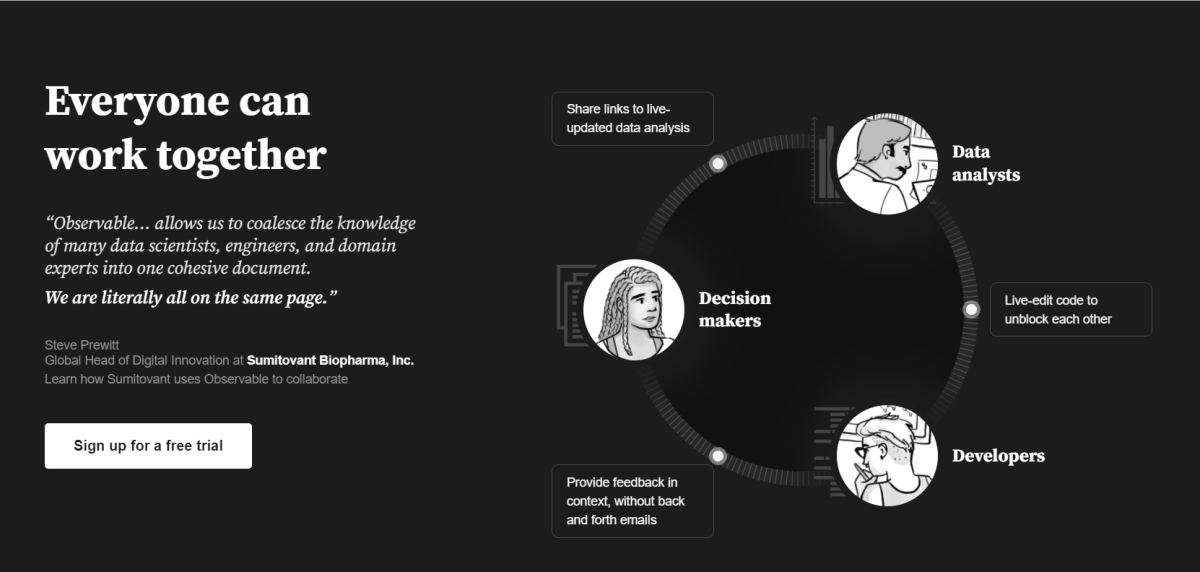In this guide, we’ll discuss the use of the classic Jupyter notebook for data science projects. And then, we’ll go over other data science notebooks. Additionally, we’ll also enumerate each of these notebooks’ features. For all this and more, let’s get started.
Jupyter Notebook for Data Science
Jupyter notebook is an interactive web-based platform used in data science projects. In addition to providing kernels for programming languages like Python, Scala, and R, Jupyter notebooks have other valuable features. Here are a few of Jupyter’s features:
Adding math equations, rich text, and mediaSupports data collection, cleaning, analysis, and visualizationBuilding and interpreting machine learning models
We’ve also put together a guide on Jupyter notebooks for data science. It’ll walk you through the Jupyter notebook’s features and help you set up your working environment. However, as you start scaling and work on large data science projects as a team, you may also want to look at other alternatives. Let’s now go over other data science notebooks you could consider. They provide the same features as the Jupyter notebook, and in addition, they also facilitate seamless collaboration and provide more flexibility and customization. If you are interested in learning Python and Jupyter, check out this Udemy course. Head over to the following sections to learn more.
Deepnote
Deepnote is a cloud-based Jupyter notebook environment. It is designed to allow data science teams to collaborate effectively. You can get started for free and start building your data science portfolio as an individual. Or you could work as part of a team. Now, let’s list down some of the useful features of Deepnote:
Provision to query data using SQL from BigQuery, Snowflake, and PostgreSQLUsage of SQL and Python in the same notebook interface without having to switch appsSupport for popular programming languages such as Python, Julia, and RSupport for deep learning frameworks such as PyTorch and TensorFlow Features to ensure reproducibility across the team by creating custom environments, or importing existing environment from DockerHub
Apache Zeppelin
Apache Zeppelin is a web-based notebook to perform interactive and collaborative data analytics in the browser. These notebooks are well-suited for performing big data analysis as a team. Here’s an overview of the features of Apache Zeppelin notebooks:
Multi-purpose notebook that can be used for all stages in the data science pipelineSupport for multiple languages and frameworks such as Python, SQL, R, Shell, Apache Spark, and Apache FlinkBuilt-in Apache Spark integration for big data analysis Provision to create dynamic input forms
Mode Notebooks
Mode Notebooks is a flagship product of Mode Analytics, and you can collaborate across teams while also following best practices in data storytelling. In most data science projects, the data collection phase involves querying databases to fetch required data. Mode Notebooks allow you to query data from connected data sources with SQL. Some useful features of Mode notebooks include:
Provision to write SQL to query databasesPerforming data analysis on the fetched dataExtending existing analysis using Mode NotebooksCreating shareable Python and R notebooks
To sum up, Mode notebooks are a great choice if your workflow starts with writing SQL queries. And then, you may extend to analysis using Python and R.
JetBrains Datalore
Datalore from JetBrains also offers a robust Jupyter notebook environment for your team’s data science needs. On the development front, Datalore includes features for coding assistance—with an intelligent code editor. It also allows teams to work with multiple data sources. In addition, there are enhanced features for collaboration and reporting. Here’s a comprehensive overview of Datalore’s features:
Programming environment for languages such as Python, Scala, and SQL Working with different data sources as well as uploading data and files to the cloud Mounting S3 bucket inside the notebook environment Reporting and organizing the team’s work in workspaces Adding checkpoints to revert to previous versions Collaborating with team members Embedding Datalore cells in social media sites, interactive plots, publishing, and more
Google Colab
Google Colab from Google research is a web-based Jupyter notebook environment, and it’s accessible from the browser with a free Google account. If you’re a data science enthusiast, Google Colab can be a great way to start building projects. Do you already use Colab for your data science projects? If yes, check out this video tutorial outlining the cool features of Colab that you should be using. Google Colab also has the following salient features:
Importing data and files from various sourcesAuto-saving notebooks to Google drive Integration with GitHub to facilitate version controlData science libraries such as scikit-learn, pandas, and PyTorch pre-installedGPU access up to a certain limit under the free tier—with Colab Pro subscription for extended access to computing resources
Nextjournal
Nextjournal is another collaborative data science notebook. In data science projects and machine learning research, reproducibility across machines with different operating systems and hardware configurations is challenging. With the tagline “The notebook for reproducible research”, Nextjournal facilitates real-time collaboration with an emphasis on reproducibility. The following are some of the features unique to Nextjournal:
Creating and sharing the entire file system as a docker imageDocker containers that are orchestrated by separate application Facility to use multiple programming languages in a single runtime Bash environment for installations during the project GPU support with minimal necessary setup
So if you’d like to reproduce results from a machine learning research paper, Nextjournal could be your ideal choice.
Count
Count offers a data science notebook with added flexibility for customization. With Count notebooks, you can choose to present the results of your data analysis as KPI reports, deep-dive reports, or as internal apps. Count’s design goal is to change the way data teams work together. Their vision is to provide a collaborative data platform that connects analysts to stakeholders. Count’s flagship SQL notebooks have the following features:
Seamless integration with multiple databases Building faster queries by connecting to multiple databases such as BigQuery, PostgreSQL, and MySQL Provides on-the-go data visualization
Hex
Hex is another Jupyter alternative that offers a collaborative data workspace, and it provides a collaborative notebook interface for both Python and SQL. And allows teams to go from ideation to analysis in data science projects faster. Some of the features of Hex notebooks include:
Browsing database schemasWriting SQL queries, and running data analysis on data framesReal-time collaboration, version control and code completion Big data integration with Snowflake, BigQuery, and RedShiftPublishing analysis as interactive data apps
Therefore, you can use Hex to simplify connecting to databases and querying from them.
Kaggle
Kaggle also offers a web-based Jupyter notebook environment designed to ensure reproducible and collaborative analysis. These notebooks can be a great way to showcase your data science projects. It’s also helpful in building a portfolio of data science projects, right from the browser. Kaggle offers the following two flavors: The notebook interface allows you to manage datasets and hardware accelerators. Once you publish a notebook on Kaggle, all community members can run your notebook interactively in the browser. You can use all datasets hosted on Kaggle or datasets from competitions. Participating in Kaggle competitions will help you level up your data science skills all the more rapidly. Here’s a video tutorial on getting started with Kaggle.
Databricks Notebooks
Databricks notebooks are collaborative data science notebooks as well. Like most other data science notebooks that we’ve seen so far, these notebooks also support accessing different data sources. Further, they also allow interactive data visualization and support multiple programming languages. In addition, Databricks notebooks also support real-time co-authoring and version control. ▶ Watch this video tutorial to get started with Databricks notebooks.
The following are a few unique features of these notebooks:
Spark-powered data dashboards Jobs scheduler to run data pipelines at scale Notebook workflows for multi-stage pipelines Connecting notebooks to clusters to speed up computing Integration with Tableau, Looker, PowerBI, and more
CoCalc
CoCalc provides a Jupyter notebook environment that shines in academic use cases. In addition to the features of the classic Jupyter notebook, CoCalc provides an integrated course management system. Let’s enumerate some of the features of CoCalc that make it suitable for teaching data science while also facilitating real-time synchronization.
Collecting all files from student submissions Automatic grading of student submission using NBGrader Kernels for Python, R Statistical Software, and Julia which are widely used in academia
Observable
Observable notebook is another collaborative platform for data science teams. With the tagline “Explore, analyze, and explain data. As a team“, Observable aims to bring together data analysts, developers, and decision-makers. It also facilitates seamless collaboration between teams. And the following are some of the cool features offered by Observable notebook:
Forking existing projects to get started right away with minimal setup Visualization and UI components for easier exploration of data Publishing and exporting notebooks, and code embedding in web pagesSecure link sharing for collaboration
Summing Up
I hope you found this listicle of data science notebooks helpful. If you’d like to facilitate better collaboration within and across teams, you now have a list of data science notebooks to choose from. In addition, having the proper tooling helps teams to collaborate effectively! From big data analysis to academia and reproducible research—you have data science notebooks tailor-made for many use cases. Happy teamwork and collaborative data science!🤝
